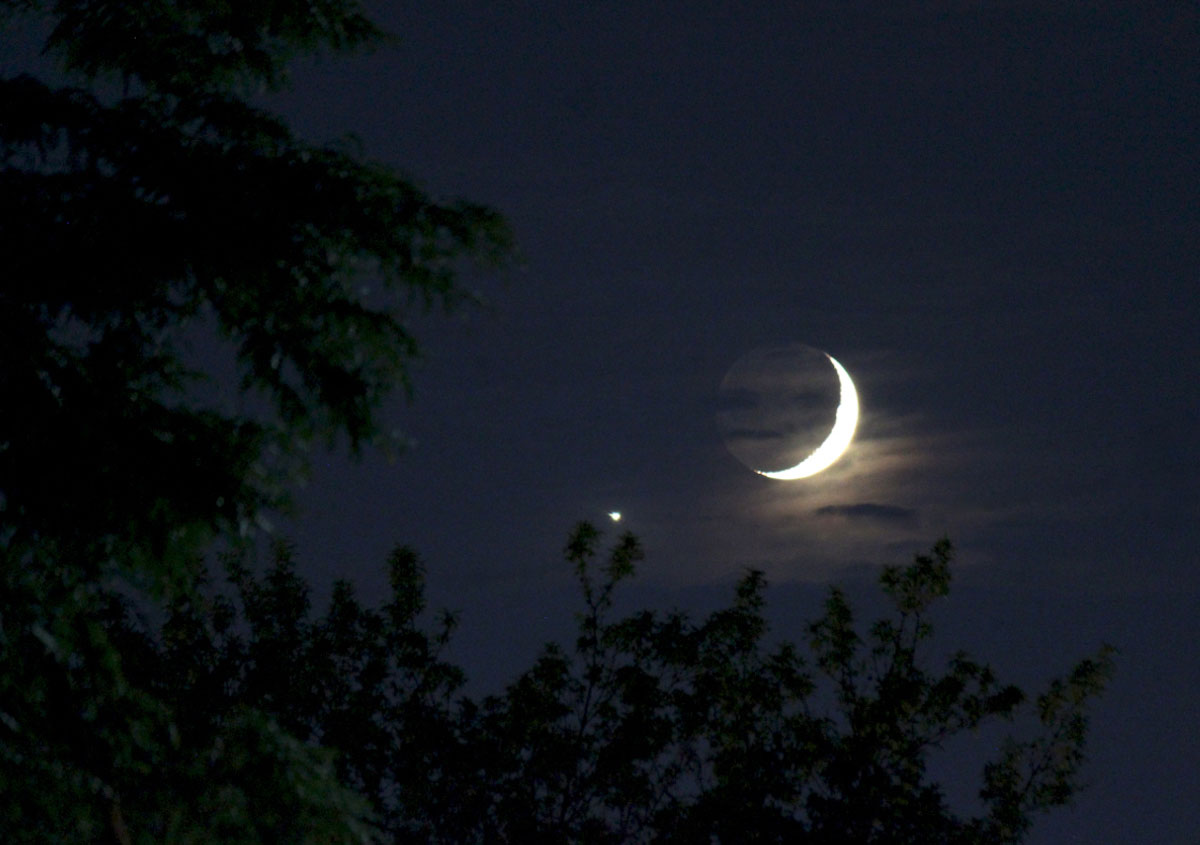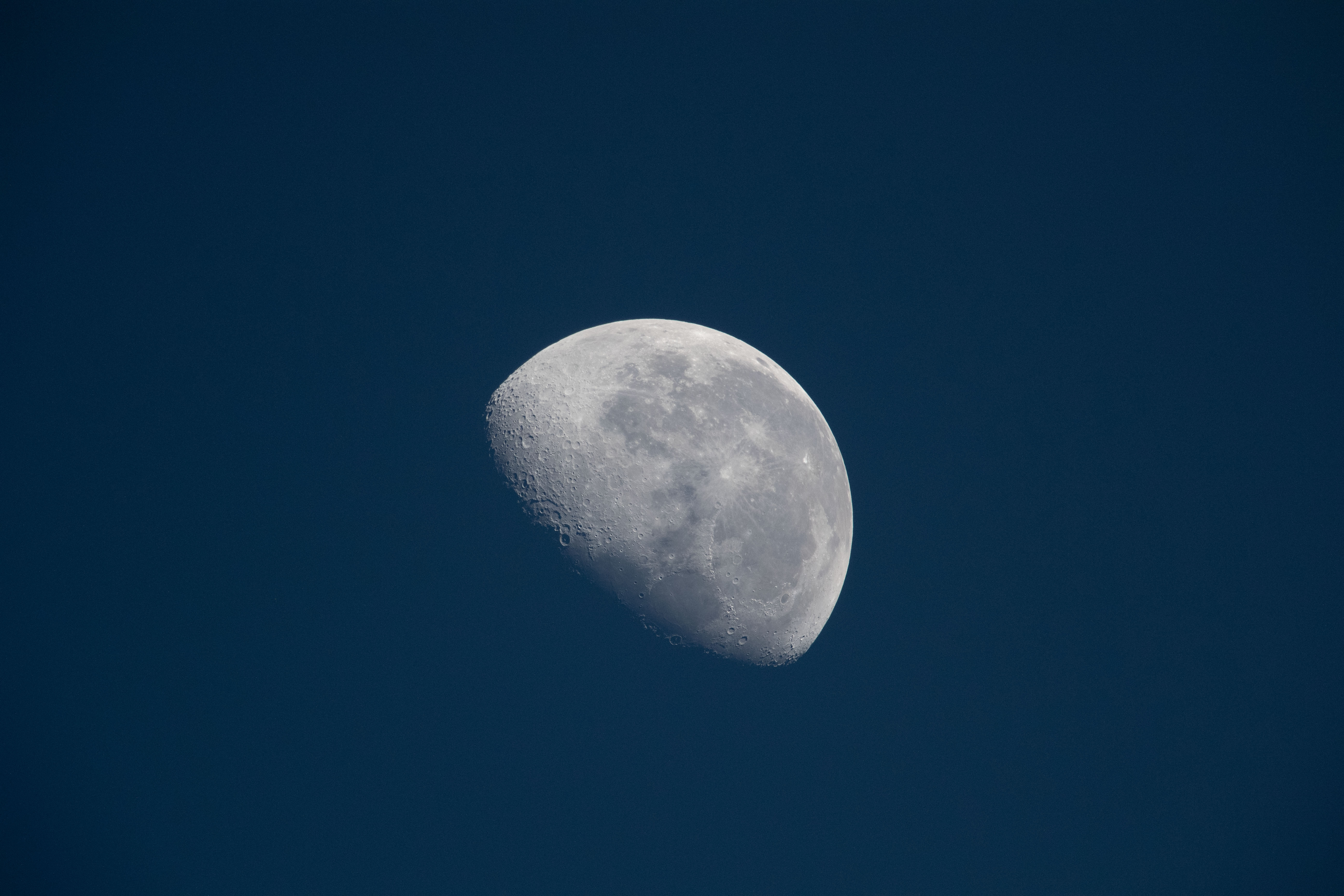
The planets are a dynamic bunch, and throughout the year as seen from Earth, these celestial bodies appear not only to move across the sky but also to brighten and fade in turn.
A planet's distance from Earth is probably the most significant factor governing its apparent brightness. Last October, for instance, Mars shone brighter than Jupiter, thanks in large part because the Red Planet was as close to Earth as it will be until 2035. In contrast, Mars is now sinking into the western sunset sky, falling deeper into the brightening twilight glow, as Earth and Mars are practically on opposite sides of the sun.
But a planet's overall brightness is also affected by its distance from the sun, which determines the intensity of sunlight illuminating its surface. When the two brightest planets, Venus and Jupiter, appear near to each other in our sky (as they will on April 30, 2022), examine them through a telescope and you'll notice that the disk of Venus appears much more dazzling than that of Jupiter, partly because it is closer to us, but chiefly because it's also more than seven times closer to the sun.
Related: The brightest planets in July's night sky: How to see them (and when)
Another factor is the size of the planet in question. Mars, for instance, is only about twice as large as our moon, so as it gets farther away, it tends to diminish in brightness faster than a noticeably larger planet like Venus would.
A less obvious factor is the planet's phase, the portion of its sunlit hemisphere turned toward the Earth. The two planets nearer to the sun than Earth, Mercury and Venus — the so-called "inferior" planets — display a complete cycle of phases just like our moon. Meanwhile, Mars appears significantly gibbous around the time of quadrature, that is, 90 degrees to the west or east of the sun. Jupiter and Saturn, in contrast, show only a slight gibbous effect, primarily because of their much greater distances from both the Earth and the sun.
Still another factor to consider is the planet's reflectivity or albedo. This factor depends on the planet's surface, including light and dark areas that may rotate into and out of view. Compared to the other planets, Venus has a very high albedo of around 70% thanks to its blanket of highly reflective clouds. Contrast this to our moon, which — it may surprise you — is a rather poor reflector: over the visible spectrum, it reflects a mere 12% of the light hitting it, absorbing the rest.
Get the Space.com Newsletter
Breaking space news, the latest updates on rocket launches, skywatching events and more!
An 'illuminating' formula
In calculating a planet's brightness, we have already noted that the first consideration is its distance from the sun. For that we must utilize the inverse-square law, which states that a specified physical quantity is inversely proportional to the square of the distance from the light source. So, from 2 feet away, a candle looks only 1/4 as bright as it does from 1 foot. From 3 feet it looks 1/9 as bright, from 4 feet 1/16 and so on. It's a law that affects so much of nature — not only light and other forms of radiation, but gravity as well.
The next factor, how far the planet is from us, again stems from the inverse-square law. The closer a planet is to us, the larger it appears in apparent size. And its apparent surface area correspondingly increases as the square of its diameter. In mid-September, Mars will be 245 million miles (395 million kilometers) from Earth and will sport a tiny 3.5-arc-second disk. Compare that to Aug. 27, 2003, when Mars was at a record-setting close distance of 34.6 million miles (55.7 million km) away and appeared 25.1 arc seconds in diameter.

Going through a phase
The impacts of phase effects are more complicated to calculate. For the moon, anyone can see that the closer it is to the full phase, the brighter it appears.
But consider Venus, which has a virtually uniform cloud cover and moves around the sun in a nearly circular orbit. Therefore, its brightness depends almost entirely on its distance from Earth and on its phase. So when Venus is very close to inferior conjunction (the point when the planet passes between Earth and the sun), it rapidly approaches our planet and as its phase thins, its disk appears to grow substantially.
The planet reaches its greatest brilliancy (about magnitude -4.9) when it appears as a crescent, approximately 25% illuminated, and coming about 36 days before and after inferior conjunction. We call this the "greatest illuminated extent" of Venus — a compromise between the amount of its disk that is illuminated versus its apparent size. Although it's only a slender crescent, we see more of Venus in total area illuminated per square arc second than at any other time.
Venus will reach this point in its current evening apparition on Dec. 3, when it will shine nearly three times brighter than it does now and its disk will appear nearly 3.5 times larger!
Yet, it's a different story for Mercury, a planet that is similar in composition to the moon. In fact, its albedo is actually a trifle less than the moon at just 11%. Despite the fact that this speedy planet swings in close to us at inferior conjunction, the amount of reflected sunlight we see from it is less because it appears as a crescent. Thus, like the moon, Mercury is brightest when "full," when it is on the opposite side of the sun from Earth.
In his book "The Solar System and Back" (Doubleday, 1970), the late, great science-fiction writer Isaac Asimov erred when he stated in the first chapter that Mercury and Venus are "both at their brightest in the crescent stage." True enough for Venus, but not for Mercury!
Joe Rao serves as an instructor and guest lecturer at New York's Hayden Planetarium. He writes about astronomy for Natural History magazine, the Farmers' Almanac and other publications. Follow us on Twitter @Spacedotcom and on Facebook.
Join our Space Forums to keep talking space on the latest missions, night sky and more! And if you have a news tip, correction or comment, let us know at: community@space.com.

Joe Rao is Space.com's skywatching columnist, as well as a veteran meteorologist and eclipse chaser who also serves as an instructor and guest lecturer at New York's Hayden Planetarium. He writes about astronomy for Natural History magazine, Sky & Telescope and other publications. Joe is an 8-time Emmy-nominated meteorologist who served the Putnam Valley region of New York for over 21 years. You can find him on Twitter and YouTube tracking lunar and solar eclipses, meteor showers and more. To find out Joe's latest project, visit him on Twitter.









